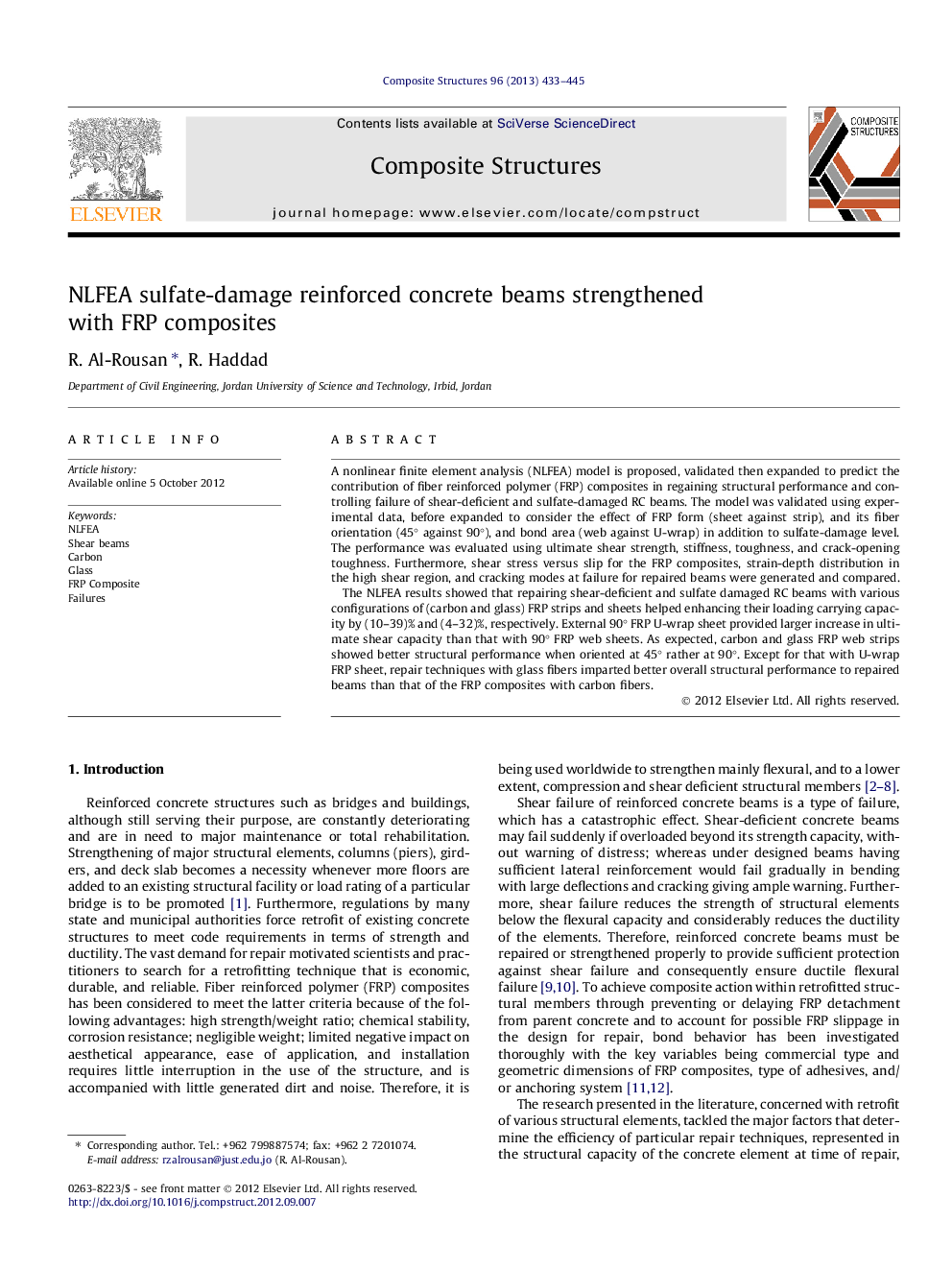| Article ID | Journal | Published Year | Pages | File Type |
|---|---|---|---|---|
| 252567 | Composite Structures | 2013 | 13 Pages |
A nonlinear finite element analysis (NLFEA) model is proposed, validated then expanded to predict the contribution of fiber reinforced polymer (FRP) composites in regaining structural performance and controlling failure of shear-deficient and sulfate-damaged RC beams. The model was validated using experimental data, before expanded to consider the effect of FRP form (sheet against strip), and its fiber orientation (45° against 90°), and bond area (web against U-wrap) in addition to sulfate-damage level. The performance was evaluated using ultimate shear strength, stiffness, toughness, and crack-opening toughness. Furthermore, shear stress versus slip for the FRP composites, strain-depth distribution in the high shear region, and cracking modes at failure for repaired beams were generated and compared.The NLFEA results showed that repairing shear-deficient and sulfate damaged RC beams with various configurations of (carbon and glass) FRP strips and sheets helped enhancing their loading carrying capacity by (10–39)% and (4–32)%, respectively. External 90° FRP U-wrap sheet provided larger increase in ultimate shear capacity than that with 90° FRP web sheets. As expected, carbon and glass FRP web strips showed better structural performance when oriented at 45° rather at 90°. Except for that with U-wrap FRP sheet, repair techniques with glass fibers imparted better overall structural performance to repaired beams than that of the FRP composites with carbon fibers.
